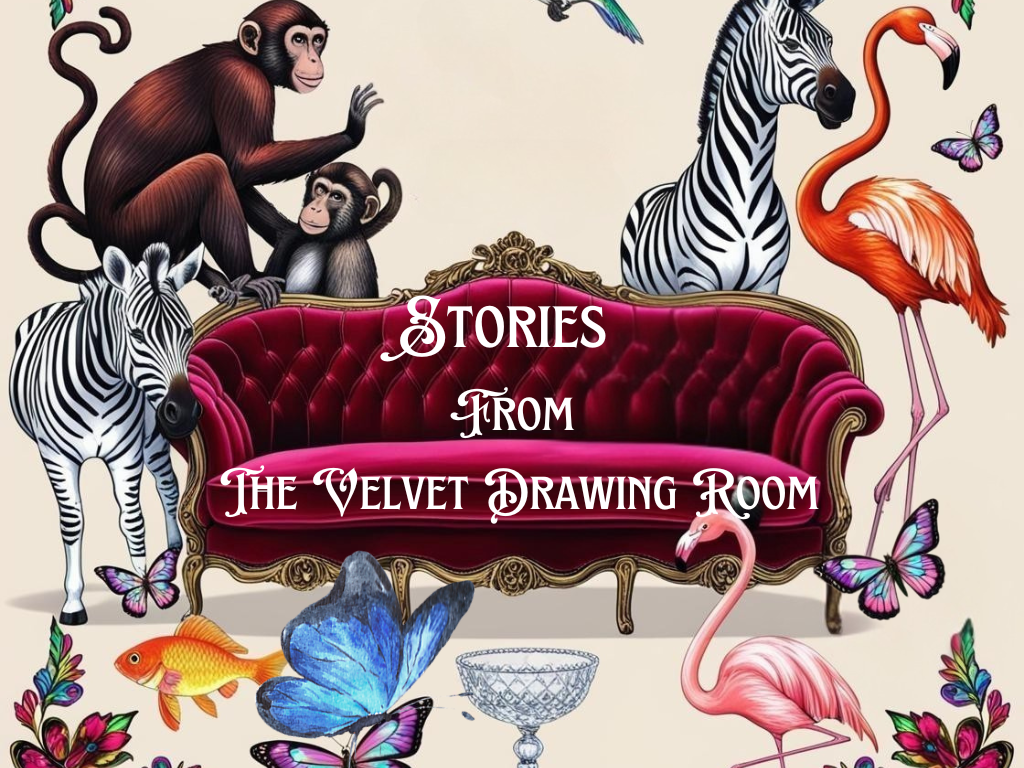E.F. Spicer of Birmingham

E.F. Spicer Taxidermist of Birmingham
Above – a postcard image of the E.F. Spicer taxidermy shop at 58 Suffolk Street (on the corner with Navigation Street – which no longer exists), Birmingham, date around 1900.
I note that this postcard image is also contained in the book by Christopher Frost “A History of British Taxidermy” printed in 1987. This postcard was offered to Christopher Frost after he wrote to all the main postcard dealers in the UK asking for postcards of taxidermist shops. Imagine getting that lot in every time it rained!!
In addition there’s another photo of this same postcard in Old Birmingham Shops, by Eric Armstrong, and it says the card was franked in January 1906
Right – a black and white image of the interior of E.F. Spicer Taxidermy shop which was sold at Tennants
Taxidermist, Naturalist & Entomologist
Fellow of the Zoological Society



Edward Francis Spicer of Birmingham (1852 - 1927)
E.F. Spicer Taxidermist of Birmingham
Edward Francis Spicer was a cousin of the famous Peter Spicer, celebrated Taxidermist, Artist and Naturalist.
In 1871 when Edward was 19yrs old he was working and living with the now-famous Peter Spicer at Victoria Terrace, Leamington Spa. Edward’s father was Thomas Spicer, the brother of Peter’s father. Edward was about 13 years younger than Peter.
With the training he received from his cousin, Peter, and with the reputation of the Spicer family, Edward Francis Spicer became a highly regarded taxidermist and naturalist in his own right, whose reputation was admired.
In about 1872, age 20, he left the safety of his cousin Peter Spicer’s business in Leamington Spa and moved about 30 miles away to form his own taxidermy firm initially located at 229, Great Colmore Street, Birmingham. He would later go on to establish his business in Suffolk Street.
At the age of 21, in 1873, Edward Spicer married Catherine Ward in Aston, Warwickshire and they would go on to have no less than 13 children between the years of 1874 – 1897 which included 3 sons – Edward Montague, Albert Victor and Harry Ward. Poor baby Harry died aged 1 yr.

Dating the cases of E.F. Spicer Taxidermist of Birmingham
Any case which shows a label at Colmore Street (I haven’t seen one) would denote a maker’s date of between 1873/4 – 1880/1 approx.
I’d say that any label which shows 61 Suffolk Street could be dated anywhere between 1880/1- 1892.
Any case with the address label of 58 Suffolk Street indicates a maker’s date of between 1892 – 1960.
Dating support evidence: E.F. Spicer Taxidermist of Birmingham
In 1871 the census lists EF Spicer as still living in Leamington Spa and has having employment in Leamington Spa.
In 1873 Edward Spicer married Catherine Ward in Aston, Warwickshire.
In 1881 Edward Spicer is listed on the census as still living at Great Colmore Street,
E.F. Spicer’s advert in a local newspaper in 1890 shows him at 61 Suffolk Street. He is working “under Royal Patronage” and claims to model in “the most artistic style” and says that private and public collections are attended to. Emu and Ostrich eggs are also advertised, and he states that he has been awarded four medals for superior workmanship.
The census in 1891 supports that he is living and working from 61, Suffolk Street
From about 1892 and up to about 1960 the business moved and was trading from number 58 Suffolk Street on the corner with Navigation Street.
Suffolk Street was the home for taxidermists it seems, since both Montagu Brown and Saville and Franklin had shops at numbers 31, 58, 61 Suffolk Street.
E.F. Spicer’s sons, Edward Montague born in 1884, and Albert Victor born in 1887 followed their father into the trade of taxidermy at the shop at 58 Suffolk Street from about 1900-1905. I wonder if the name of his son, Edward Montague, was influenced at all by the Montague Brown that E.F. Spicer must have known fairly well up to about 1878 when he vacated his shop at 61 Suffolk St – the same shop that E.F. Spicer took over in about 1900.
Montagu Brown published “Practical Taxidermy” in 1878 (later two further editions were published) and he became the Curator of the Leicester Museum in 1881, in charge of the museum’s Natural History displays. You can view/download a copy which is copyright free here from The Velvet Drawing Room site
Edward and Albert ultimately took over the running of the business from their father from about 1920 onwards. E.F. Spicer died in 1927. Albert Victor died in 1954, and Edward Montague died in 1964.
IF YOU WOULD LIKE TO HAVE INFORMATION FROM THE FAMILY TREE OF E.F. SPICER PLEASE CONTACT ME
1884 – 1887

There were a couple of interesting newspaper articles that I found in which Edward F Spicer appeared to have debt judgements against him – one in 1884 and a similar one in 1887 – both for the sum of more than £10 (and possibly it’s the same lingering debt), but after 1887 I don’t find any other references to this debt or sum but in today’s money it’s worth about £1,000.
Interestingly, one of his apprentices Arthur J. Harris (who had joined him in 1872 upon opening his business in Birmingham), went on to open his own successful business in the mid to late 1880’s, at Baker Street, Enfield. (see blog post)
Perhaps, with the problem of the firm’s debts in the mid 1880’s and the birth of more children, including his sons Edward and Albert, Edward Spicer could no longer afford to pay Mr Harris, and so this may have been the catalyst for Harris’ decision to set up on his own – we will never know.
A beautiful antique case of African Birds by E.F. Spicer Taxidermist Birmingham.
Dated approx 1900-1910
This is a nice example of the work of E.F. Spicer at the turn of the last century. It’s Edwardian, and its history and provenance are very interesting.
It contains: Giant Kingfisher, Standard-winged nightjar, two Blue-cheeked Bee eaters, White-throated Bee eater, African Pygmy Kingfisher, Malachite Kingfisher, Shining-blue Kingfisher, Grey-headed Kingfisher, Woodland Kingfisher, Blue-breasted Kingfisher, Striped Kingfisher, European Golden Oriole, together with a collection of approximately nineteen various Sunbirds including three splendid sunbirds. In addition, it has two Olive sunbirds, Olive-bellied sunbird, Collard sunbird, and a Copper sunbird. The large period ebonised three-glass display case measures 73 cm by 22.5cm by95cm and is in very good original condition.
This case is in my own collection, obtained at auction at Tennants in 2023. I love it, it’s gorgeous and this is the one and only reason for buying it. However, the story behind it is also lovely. It had been kept within a family whose ancestors had a history with Africa. The case remained in the family for over 100 years before it was sold. These birds are native to Africa, and are found mostly around Kenya and Tanzania. They were brought back from an ancestor’s travels after 1900 and they were subsequently cased by a taxidermist in the UK Midlands area where the family lived.
Although it bears no label, the attribution to E.F. Spicer was made using knowledge and experience of The Head of Taxidermy and Natural History, Mr Robbie Bright at Tennants
Robbie says
“after studying numerous cases by E.F. Spicer I noticed he never religiously stuck to one style of case, some were in unpainted oak, some were fully ebonised with varying construction habits, I feel possibly it would have been at the customers discretion and depth of pocket as to what case they wanted”.
“Also taking into account the graduated paint schemes used in his cases…there were few if any taxidermists who would have the opportunity to mount such a varied collection of birds, especially if you’d travelled the world and collected such beautiful and interesting specimens, you’d most likely source a reputable and well-known taxidermist to mount such specimens”

Examples of cases by E.F. Spicer
1886-1887
Birmingham exhibition of Manufacturers and Natural History
E.F. Spicer Taxidermist of Birmingham
E.F. Spicer attended the Birmingham exhibition of Manufacturers and Natural History which took place from August to October 1886.
He was stated in a review of the exhibition as having “brought the art of a taxidermist to perfection” after showing animals and birds there.
He also attended the Royal Yorkshire Jubilee Exhibition in May 1887 and had a large stall in Court 2.




Discover more from thevelvetdrawingroom.co.uk
Subscribe to get the latest posts sent to your email.



























